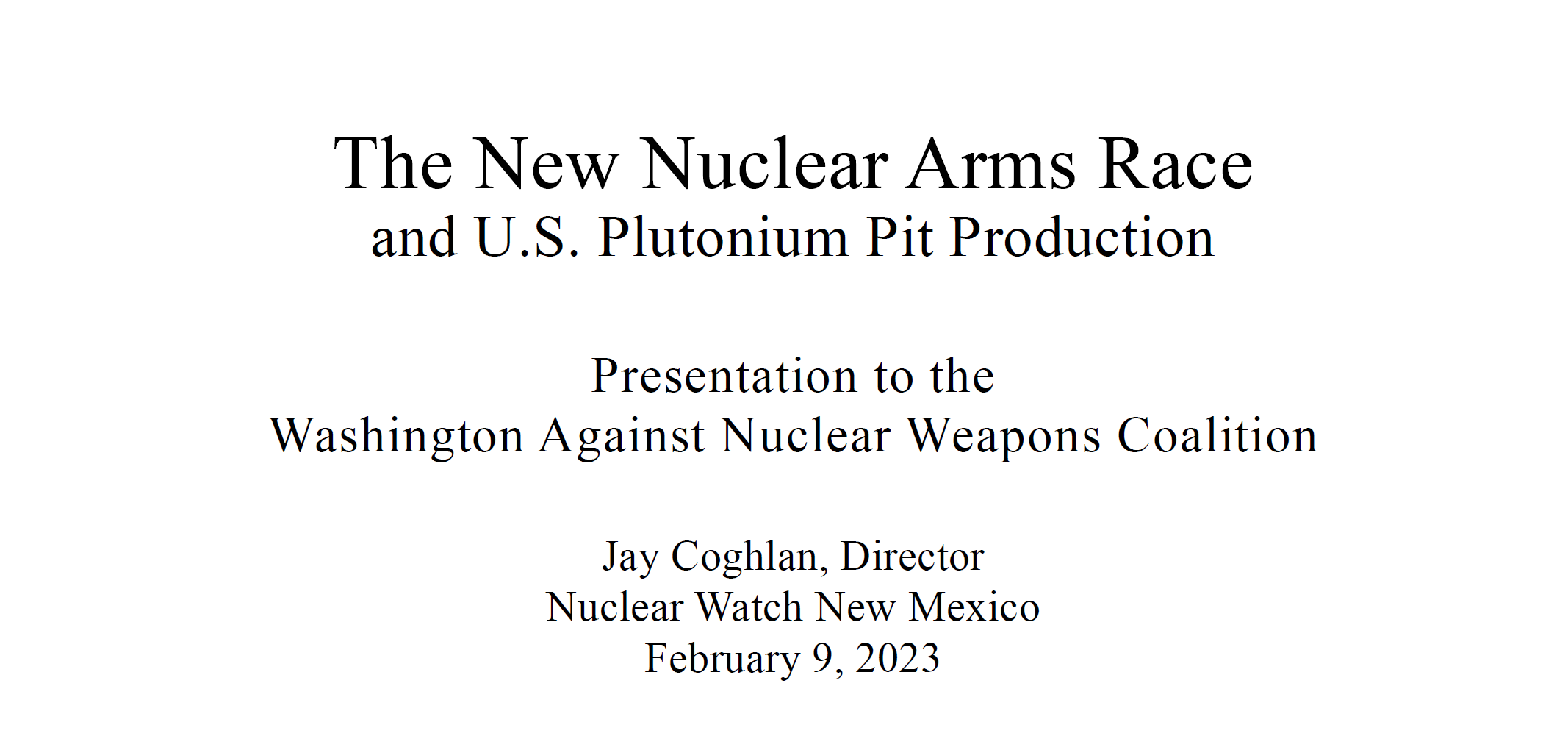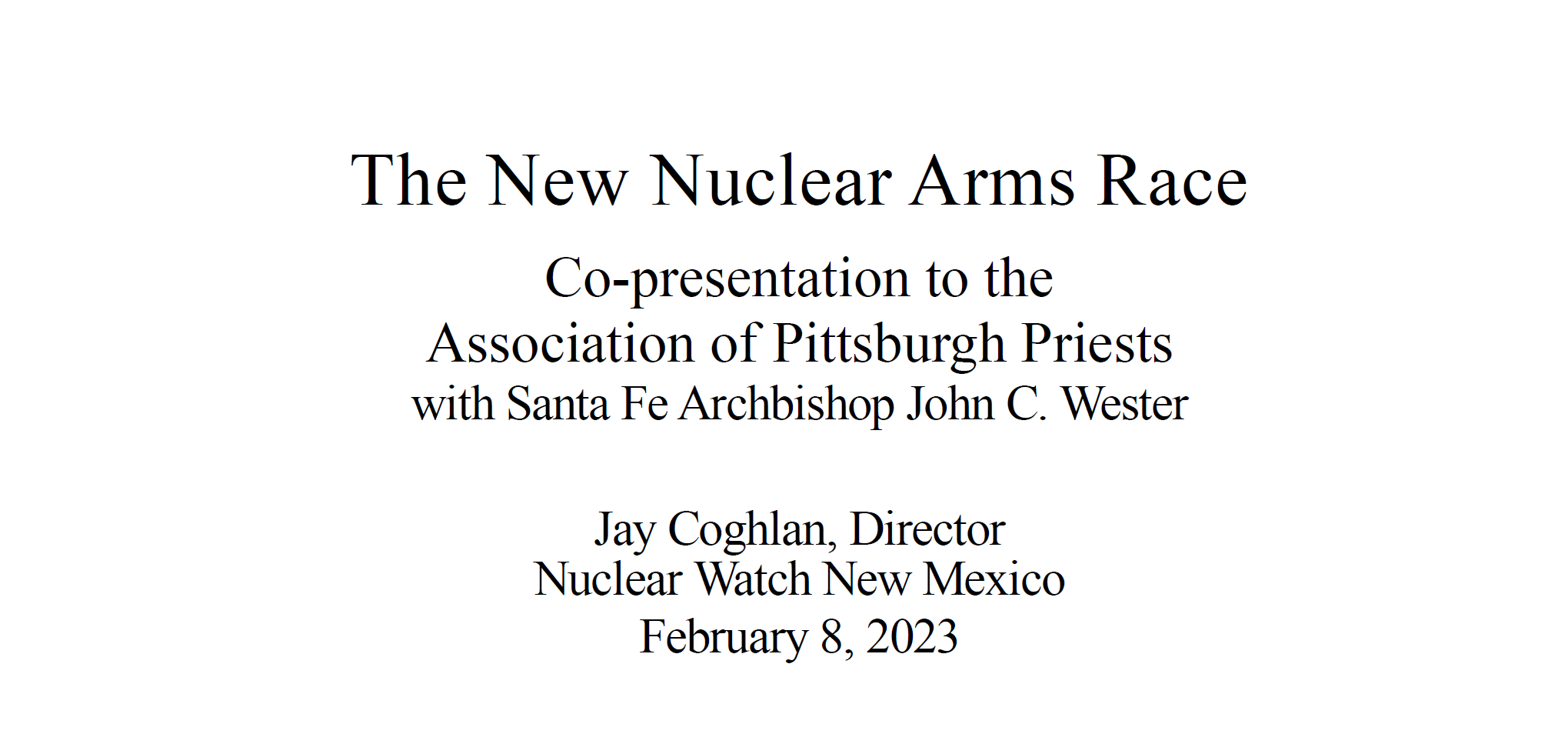QUOTE OF THE WEEK
Nothing Found
It seems we can’t find what you’re looking for. Perhaps searching can help.
LANL’s Central Mission: Los Alamos Lab officials have recently claimed that LANL has moved away from primarily nuclear weapons to “national security”, but what truly remains as the Labs central mission? Here’s the answer from one of its own documents:
LANL’s “Central Mission”- Presented at: RPI Nuclear Data 2011 Symposium for Criticality Safety and Reactor Applications (PDF) 4/27/11
Banner displaying “Nuclear Weapons Are Now Illegal” at the entrance in front of the Los Alamos National Lab to celebrate the Entry Into Force of the Nuclear Weapon Ban Treaty on January 22, 2021
Nothing Found
It seems we can’t find what you’re looking for. Perhaps searching can help.
Follow the Money!
Map of “Nuclear New Mexico”
In 1985, US President Ronald Reagan and Russian President Mikhail Gorbachev declared that “a nuclear war cannot be won and must never be fought.”

Waste Lands: America’s Forgotten Nuclear Legacy
The Wall St. Journal has compiled a searchable database of contaminated sites across the US. (view)
Related WSJ report: https://www.wsj.com
NEW & UPDATED
Top Environment Official Takes Inside Info to Nuclear Weapons Agency, Gets Puny Slap-on-Wrist for Ethical Violation; Governor Should Enforce State Code of Conduct
FOR IMMEDIATE RELEASE, February 8, 2023 | Joni Arends, Concerned Citizens for Nuclear Safety – 505.986.1973 | Email
Jay Coghlan – 505.989.7342 | Email
Santa Fe, NM – The Department of Energy (DOE) will spend $9.4 billion dollars in New Mexico during this fiscal year 2023, 10% more than the State’s entire operating budget of $8.5 billion. To help enable its agenda of expanding nuclear weapons production that will cause more radioactive wastes and contamination, the DOE’s semi-autonomous National Nuclear Security Administration (NNSA) or its contractors often go head hunting for top State officials.
The New Mexico Environment Department (NMED) has sued DOE over the slow pace of cleanup at the Los Alamos National Laboratory (LANL). Stephanie Stringer, former Deputy Cabinet Director (the number two position at NMED), applied to work for NNSA in August 2022, and resigned to take that job in November. During that time, she was privy to NMED litigation strategy against DOE and chaired the New Mexico Water Quality Control Commission that denied a citizens’ motion against one of LANL’s most crucial facilities for expanding plutonium pit production, the Radioactive Liquid Waste Treatment Facility. As a result, the New Mexico Ethics commission fined Stringer a paltry $250. Assuming that Stringer is earning at least $100,000 base salary in her new position, that fine would have cost her approximately five hours of her time.
What justice means to communities affected by nuclear testing
A traditional—and sustainable—way of eating is just one of many things the US government has stolen from the Bikini community and other Marshallese by conducting 67 atmospheric nuclear tests. Marshallese have lost their culture, their land, and their health.
What does justice, therefore, mean to a community that has lost so much?
By Rebecca Davis Gibbons | February 2, 2023 thebulletin.org
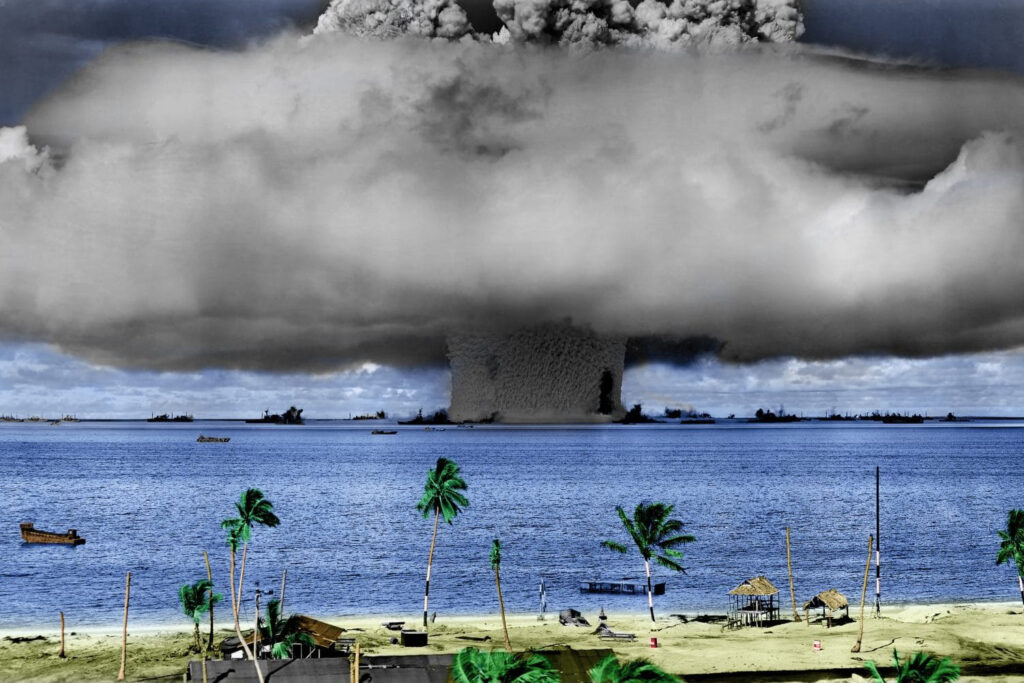
Editor’s note: This commentary is part of a roundtable on nuclear injustice.
I commend Franziska Stärk and Ulrich Kühn on calling attention to the important but underappreciated topic of nuclear injustice in their recent piece in the Bulletin. As their article makes clear, many individuals, communities, and countries have faced nuclear-induced injustices over the course of the nuclear age.
Some readers of Stärk and Kühn’s article may disagree over aspects of their assessment of nuclear deterrence or the effects of nuclear weapons in the ongoing war in Ukraine. But there should be little debate over the injustices faced by communities victimized by past nuclear testing and uranium mining. A prime example of nuclear injustice can be found on Kili Island in the Republic of the Marshall Islands, a place where I have firsthand experience.
On the day I arrived on Kili Island with two other recent college graduates, our hosts walked us down to the beach. A power boat came ashore, making its way through a channel where the coral that makes up and surrounds the island had been blasted away. One of the fishermen held up a large tuna. He pulled out a knife and cut some of the flesh and gave it to us. I enjoyed the freshest sashimi I had ever tasted to this day.
It turned out, however, that fish, a traditional staple of the Marshallese diet, was not going to be part of mine as I lived and taught elementary school on the island in the early 2000s. The community on Kili, a speck of an island at 200 acres, is inhabited by the Bikini people. In February 1946, the US military governor for the Marshall Islands arrived on Bikini Atoll and asked its residents to temporarily move off their atoll, with its 23 islands and a lagoon full of fish, so the United States could test weapons for “the good of mankind and to end all world wars.” They agreed to leave with the promise they would return.
Top Environment Official Takes Inside Info to Nuclear Weapons Agency, Gets Puny Slap-on-Wrist for Ethical Violation; Governor Should Enforce State Code of Conduct
Santa Fe, NM – The Department of Energy (DOE) will spend $9.4 billion dollars in New Mexico during this fiscal year 2023, 10% more than the State’s entire operating budget of $8.5 billion. To help enable its agenda of expanding nuclear weapons production that will cause more radioactive wastes and contamination, the DOE’s semi-autonomous National Nuclear Security Administration (NNSA) or its contractors often go head hunting for top State officials.
The New Mexico Environment Department (NMED) has sued DOE over the slow pace of cleanup at the Los Alamos National Laboratory (LANL). Stephanie Stringer, former Deputy Cabinet Director (the number two position at NMED), applied to work for NNSA in August 2022, and resigned to take that job in November. During that time, she was privy to NMED litigation strategy against DOE and chaired the New Mexico Water Quality Control Commission that denied a citizens’ motion against one of LANL’s most crucial facilities for expanding plutonium pit production, the Radioactive Liquid Waste Treatment Facility. As a result, the New Mexico Ethics commission fined Stringer a paltry $250. Assuming that Stringer is earning at least $100,000 base salary in her new position, that fine would have cost her approximately five hours of her time.
Santa Fe new Mexican “MY VIEW” – Tina Cordova: No more nuclear sacrifice in our state
“No more waste. No more wasteland. No more sacrifice. No more sacrifice zone. No more suffering. We’ve done enough.”
Santa Fe New Mexican, Tina Cordova | January 28, 2023 santafenewmexican.com
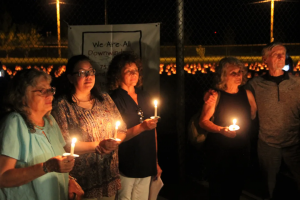
Many years ago, Jan. 27 was designated the National Day of Remembrance for Downwinders, a time to recognize the sacrifice and suffering so long experienced by those who were overexposed to radiation as part of our country’s testing of nuclear weapons. The people of New Mexico were, after all, the first “Downwinders” any place in the world.
It would be monumental if our government would do more than set aside a day to remember us and actually take responsibility for the damage that was done to us. Holding the government to account is an ongoing fight that we wage every day with Congress — only to be told it’s going to cost too much. This, while they pass an $857 billion defense budget.
This year, as the people of New Mexico reflect on what happened to us more than 77 years ago, we should also reflect on what is about to happen to us today. A proposal is making its way through the federal government that would allow private industry to store tens of thousands of tons of high-level nuclear waste in southeastern New Mexico.
We cannot accept the risk of this prospect and must fight this effort with all that we have.
Downwind and dosed
Half the cast and crew involved with the John Wayne film, The Conqueror, shot in 1954 and released two years later, died of cancer.
Beyond Nuclear | January 19, 2023 beyondnuclear.org

They were the most high-profile victims of the fallout from atomic testing at the Nevada Test Site, which contaminated land, water and people. Although the film location site, in St. George, Utah, was more than 100 miles away, the radiation levels there were so high that when Wayne tested them with a Geiger counter he thought the equipment was broken. As The Guardian described it in a 2015 article, “the United States turned swathes of the desert radioactive during the cold war and denied it.”
Now, a new documentary directed by Mark Shapiro and Douglas Brian Miller — Downwind — is premiering at the Slamdance film festival, telling the stories of St. George citizens and activists harmed by the radioactive fallout from the Nevada Test Site. Libbe HaLevy talks to Shapiro on this week’s Nuclear Hotseat.
Mary Dickson: Downwinders deserve more than a day of recognition
Congress must act to compensate victims of atomic testing.
Salt Lake Tribune | January 18, 2023 sltrib.com
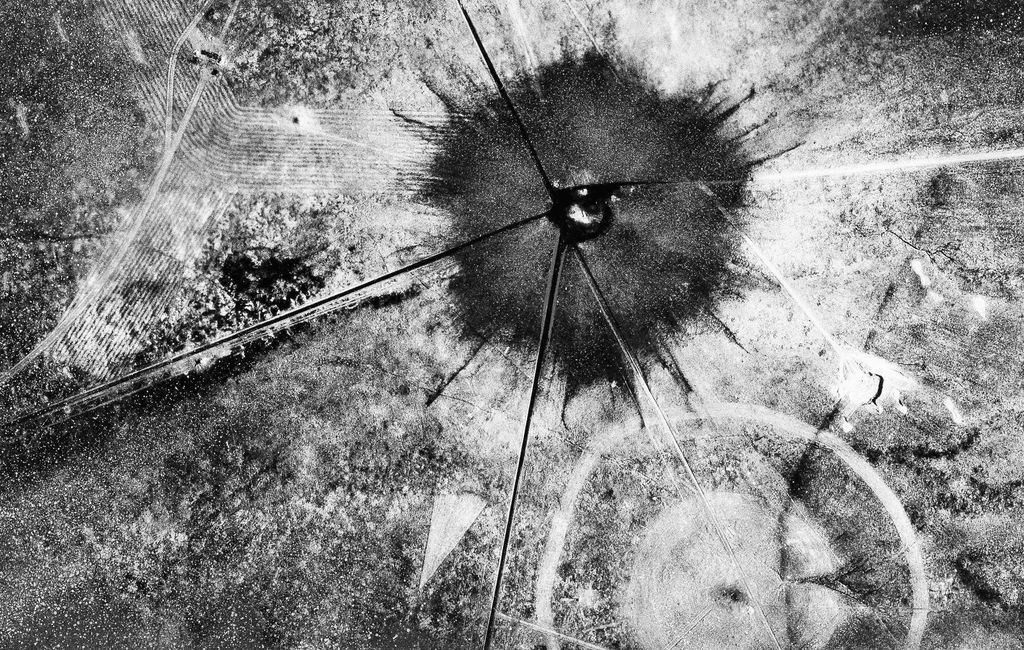
Last month, as 2022 drew to a close, Congress approved $857 billion in defense spending under the 2023 National Defense Authorization Act.
I can’t help but be struck by the amount we are putting toward a one-year military budget — $45 billion more than was requested and a full $80 billion more than last year — at the same Downwinders are pushing for an expansion of the exceedingly limited Radiation Exposure Compensation Act (RECA).
It’s been 32 years since RECA was enacted in 1990, and during that time only $2.5 billion has gone toward partial restitution for the harms caused to ordinary citizens by our own government as a result of atmospheric nuclear tests in Nevada. When it comes to defense, there always seems to be a surplus of funds, but not enough for the tens of thousands of unfortunate civilians who became casualties of the production and testing of lethal weapons of mass destruction.
January 27, designated as a National Day of Remembrance for Downwinders, marks the 72nd anniversary of the first nuclear blast at the Nevada Test Site in 1951. All these years later, Downwinders are still fighting for acknowledgement and compensation for the suffering and devastating losses that we’ve endured as a result of radioactive fallout spread across the country.
The ‘East Wind-41’ is the Longest-Range Missile in the World
When people think about how a city is destroyed in a nuclear war, they invariably question where the missile or bomb will have come from.
By Douglas A. McIntyre, 24 WALL ST NEWS | January 26, 2023 24wallst.com
One option, the oldest, is strategic bombers like the B-52. Another is from nuclear submarines. Recently, a Russian submarine that carried nuclear torpedoes was seen near the Arctic Circle. The third threat is intercontinental ballistic missiles that travel thousands of miles carrying multiple warheads. (This is what a nuclear war would do to the world.)
ICBMs are usually launched from inside the borders of the deploying countries. China’s DF-41 can travel 7,456 to 9,321 miles, the greatest distance of any long-range missile, according to Arms Control Association, an organization that promotes effective arms control policies. Russia and the U.S. also have extremely long-range missiles.
For comparison purposes, the longest commercial flight in the world is the Singapore Airlines route from New York City to Singapore, which covers 9,537 miles. People routinely have to fly 7,000 miles or more to reach several cities in Australia.
Mike Pompeo says world has ‘no idea’ how close India and Pakistan came to nuclear war
Former US secretary of state says in his book that Washington’s timely intervention prevented an escalation.
“It took us a few hours – and remarkably good work by our teams on the ground in New Delhi and Islamabad – to convince each side that the other was not preparing for nuclear war,”
Aljazeera | January 25, 2023 aljazeera.com

India and Pakistan came close to a nuclear war in 2019 and Washington’s intervention prevented an escalation, former US Secretary of State Mike Pompeo says in his new memoir.
This happened in February 2019 after New Delhi broke precedent by launching air raids inside Pakistani territory after blaming an armed group there for a suicide bombing that killed 41 Indian paramilitary soldiers in the flashpoint Kashmir region. In response to the attack, Islamabad shot down an Indian warplane, capturing the pilot.
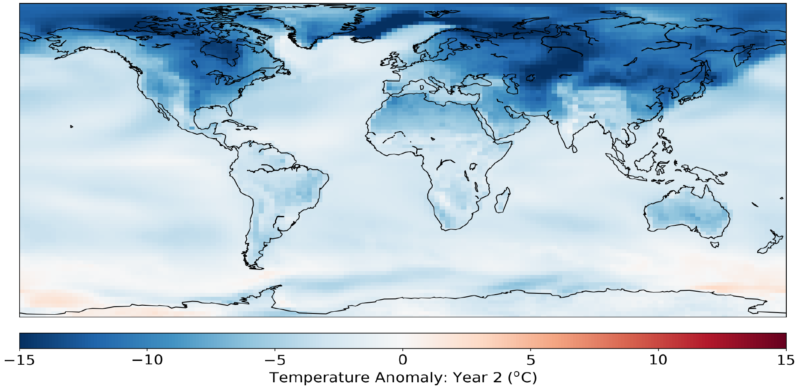
A time of unprecedented danger: It is 90 seconds to midnight
This year, the Science and Security Board of the Bulletin of the Atomic Scientists moves the hands of the Doomsday Clock forward, largely (though not exclusively) because of the mounting dangers of the war in Ukraine. The Clock now stands at 90 seconds to midnight — the closest to global catastrophe it has ever been.
Bulletin of the Atomic Scientists | January 24, 2023 thebulletin.org
The war in Ukraine may enter a second horrifying year, with both sides convinced they can win. Ukraine’s sovereignty and broader European security arrangements that have largely held since the end of World War II are at stake. Also, Russia’s war on Ukraine has raised profound questions about how states interact, eroding norms of international conduct that underpin successful responses to a variety of global risks.
And worst of all, Russia’s thinly veiled threats to use nuclear weapons remind the world that escalation of the conflict by accident, intention, or miscalculation is a terrible risk. The possibility that the conflict could spin out of anyone’s control remains high.
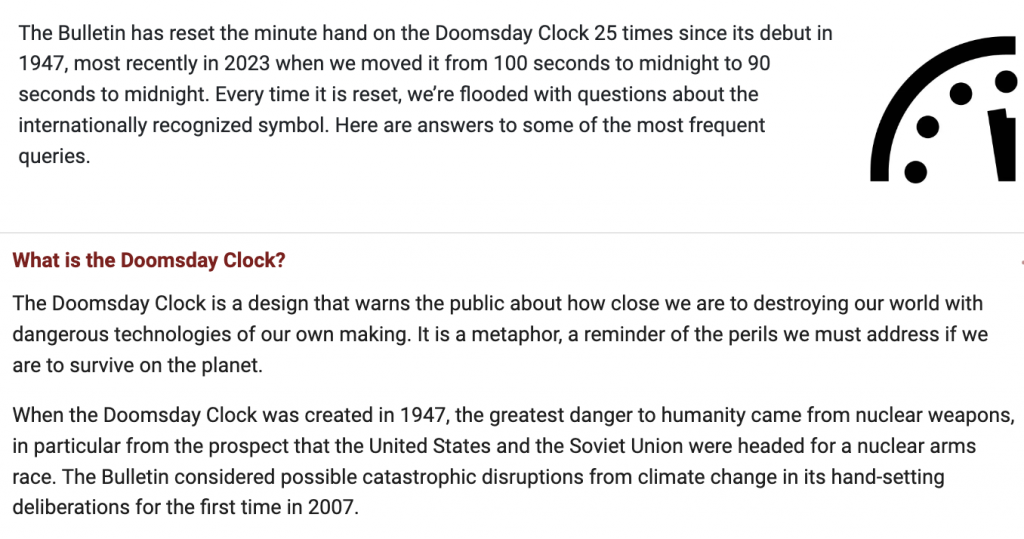
Unusual blood cancer cases among US troops who manned nuclear missile silos at a base in Montana are raising new questions for the military
“If the cancers are related to their service, it will not be the first time. American service members have been exposed cancer-causing agents in the past, such as those who were sent to the Pacific to help clean up the fallout from extensive nuclear weapons testing.”
By Jake Epstein, Business Insider | January 23, 2023 businessinsider.com
The US military is looking into unusual blood cancer cases among officers who previously manned nuclear missile silos at a base in Montana, an Air Force official said following the release of a new report.
Nine military officers who worked at Malmstrom Air Force Base as missileers, troops tasked with standing by in underground bunkers to fire nuclear missiles, have been diagnosed with non-Hodgkin’s lymphoma at ages noticeably younger than the median age for this disease, and the military is investigating if there is a connection between their respective services at the facility — some of which stretch back decades — and the disease, the Associated Press reported Monday.
The report cited a briefing presented by US Space Force Lt. Col. Daniel Sebeck earlier this month to his unit and obtained by the AP.
“There are indications of a possible association between cancer and missile combat crew service at Malmstrom AFB,” Sebeck said in his presentation, adding that there was concern over the “disproportionate number of missileers presenting with cancer, specifically lymphoma.”
CRITICAL EVENTS
Nothing Found
It seems we can’t find what you’re looking for. Perhaps searching can help.
ACTION ALERTS
Nothing Found
It seems we can’t find what you’re looking for. Perhaps searching can help.
Nothing Found
It seems we can’t find what you’re looking for. Perhaps searching can help.
New Nuclear Media: Art, Films, Books & More
Nothing Found
It seems we can’t find what you’re looking for. Perhaps searching can help.
Nothing Found
It seems we can’t find what you’re looking for. Perhaps searching can help.














